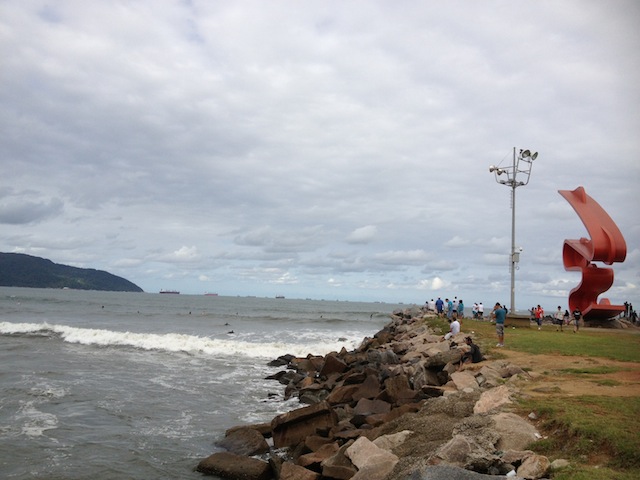
Santos is about 45 miles away from Sao Paulo and is easily accessible by car. It took us about an hour to get there from Paraiso neighborhood of Sao Paulo on a Sunday morning when there was no rush hour traffic.
Slums of Sao Paulo were what I saw as we got a little farther away from the city. The rodovia dos Imigrantes (highway to Santos) took us through several tunnels circling around Serra do Mar (the mountain ranges) to beautiful mountains, the Atlantic natural coastal plants and valleys and finally to the historical city of Santos.

Not much was happening in the historical part of Santos on our arrival because it was Sunday and office workers were not around. Stores and restaurants were closed except for a few. The beachfront of Santos was a different scene.
A fun thing to do is to take the old streetcar at Praca Maua (Maua Square), the heart of the old town. There are three streetcars in Santos of different styles. Two were from Scotland brought in 1909 and 1911. Another one was donated by Portugal. The 30 minute ride took us around the historical town of Santos passing through Jose Bonifacio Palace, the old church Igreja N.S. Do Rosario, Palacio Saturnino de Brito, the old finucular at Monte Serrat, Teatro Coliseu, Santuario Santo Antonio do Valongo, The old Santos-Jundial Train Station, The Andradas Pantheon and many more.
The commentary in the streetcar was presented only in Portuguese. It costs R$5 per person. The streetcars are available from Tuesday to Sunday from 11 a.m. to 5 p.m. including holidays.
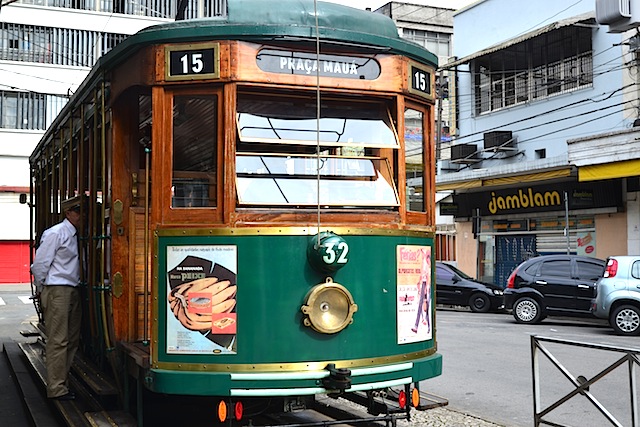
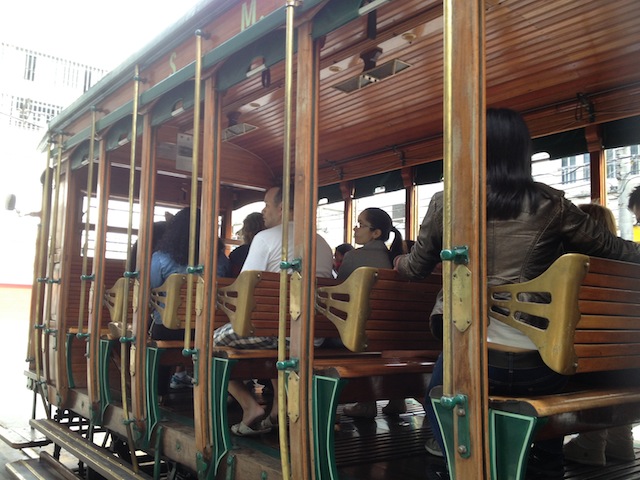
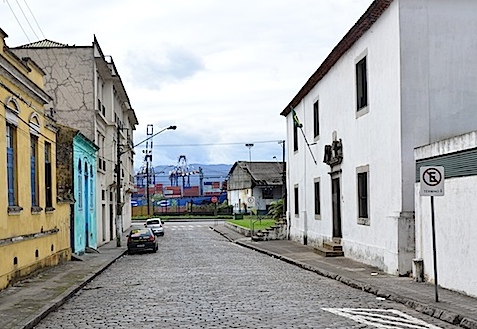
The most interesting part for our day trip was a tour to Museu do Café. You can read all about it in an article I wrote, The History of Coffee in Brazil. This building has the most beautiful artwork and stained glass on the ceiling painted by 19th century Brazilian historian and artist, Benedito Calixto who was a native of Santos. Santos is surrounded by history and culture. It is the birthplace of Brazil's father of Independence, Jose Bonifacio de Andrada e Silva and famous painter Benedito Calixto.
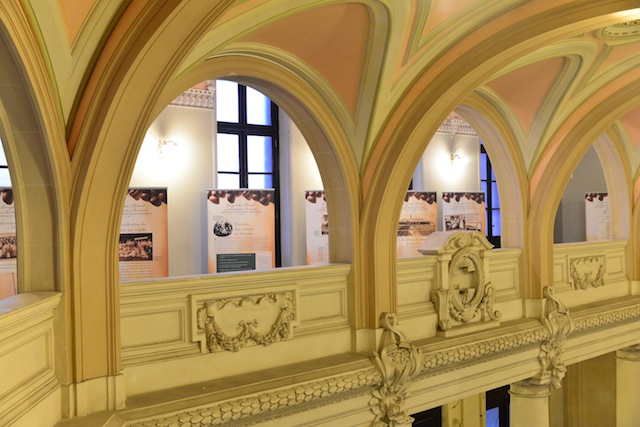
Santos is one of the oldest cities in Brazil. Its neighbor, just a few miles down the coastal road, Sao Vicente was the oldest and the first Portuguese settlement in Brazil. You can recognize the borderline of Santos and Sao Vicente by a little island by the beach.
It seems like the locals like to hang out at the beach and in the park. The 8 km beach stretched from Sao Vicente at the western side to Baia de Santos to the east. Surfers were having a great time as the tide was just right for surfing.
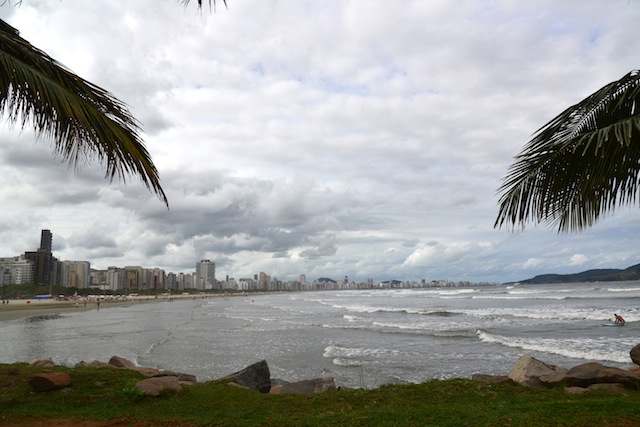
Families were spending time rollerblading, cycling, walking and resting in the park by the beach. According to our guide this is one of the biggest beach parks in the world. In the distance, cargo ships were lining up to dock. Santos port is the largest in Brazil and the busiest in South America.

Santos was an important city before Sao Paulo became the business center of Brazil. It was here that immigrants came and goods were brought in from overseas and coffee and other produce were exported overseas. Today the port still holds its status but the city seems to have lost its luster.
The once important restaurant by the beach in Santos, Ilha Porchal Clube looked old and tired. Inside the building is a large dining room and Sunday brunch was being prepared when we walked through the restaurant. The restaurant has a gorgeous view of the city, the beach and the lagoon.
By the lagoon were a few older gentlemen paddleboarding and enjoying the afternoon sun and breeze.


For lunch we stopped by Tasca do Porto in the old town of Santos just a few minutes walk from the Coffee Museum. The sound of music was coming from the restaurant located in an old building with huge doors. A friendly lady dressed in traditional Portuguese dress greeted us and inside were two musicians entertaining guests. The wall of the restaurant was decorated with the look of Portuguese tiles called azulejo.
Look at the food we had. Arroz de Mariscos, which was rice with squid, shrimp and shellfish which tasted almost like paella. This was so super delicious. The other dish was Arroz de bacalhau, fried codfish with fried potatoes.

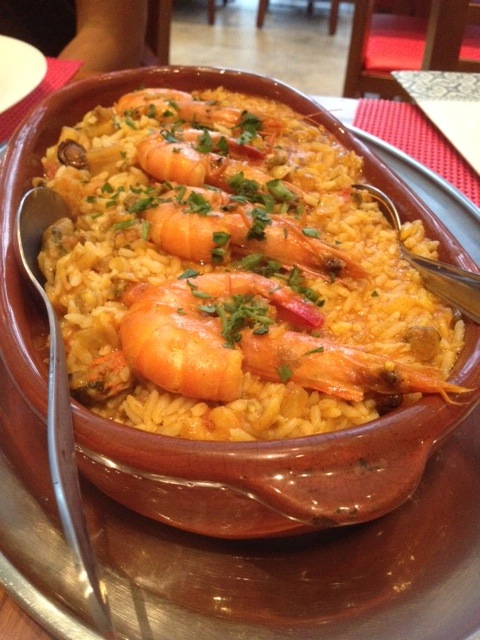
These dishes were some of the best I have tasted in Brazil. I highly recommend this restaurant. Though a little pricey, the server was friendly, attentive and the atmosphere was fun with great music and was close to the coffee museum, the biggest attraction in Santos.
Santos is a great place to trace the history of Brazil and the commercial importance of Sao Paulo state and city. It is worth a day trip from Sao Paulo and if you like surfing, it must be good because we saw a famous world champion surfer walk past us.
Have you been to Santos? Let us know.

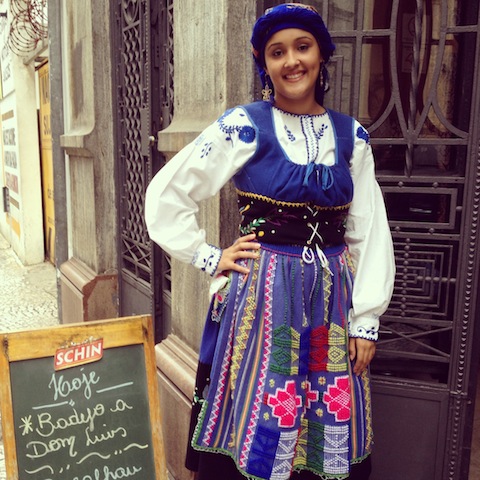

Leave a Reply
You must be logged in to post a comment.